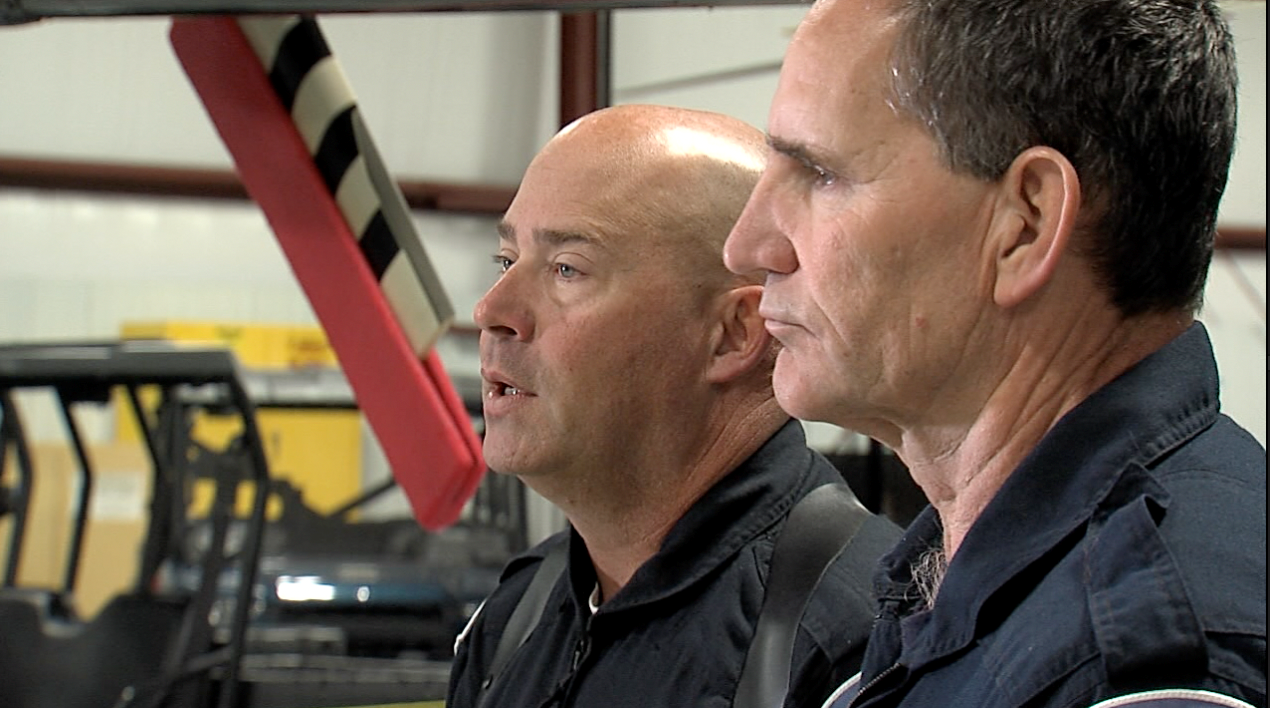GREENWOOD — Indiana State Police has a tool and eyes in the sky to help public safety agencies across the state when they need it most.
It’s no surprise an agency like Indiana State Police has helicopters and airplanes to get places quickly and efficiently when needed, but it’s the camera underneath that gives ISP an advantage when seconds count.
Rob McKeeman worked the roads as an ISP trooper for 18 and a half years. When asked if he wanted to become the agency's first tactical flight officer, it didn’t take long for him to decide.
“The answer was yes, like immediately. People pay big money to fly in a helicopter right and I get to do it for free," McKeeman said.
While working from a couple of thousand feet in the air is cool, it’s a serious job.
He uses these cameras on the bottom of the chopper to get a bird’s eye view of the search area.
“We can then guide people to where this person is, wither again it's somebody from a pursuit, or if it's somebody's grandmother, or a child with autism that maybe is nonverbal, you could have an officer walk right past the kid and maybe not say anything. But we can see that that child,” McKeeman said. “So we can guide them in.”
The tool that helps the most is the infrared camera, the only thing it talks about is hot and cold.
“There'll be somebody laying in the cornfield, and they just show up as a white spot, if you will, in the human form. We can't see their face, we can't tell anything about him and then we can turn the other camera on and maybe see into that corn and say 'Ok we've got your guy with the red shirt and the jeans on,” McKeeman said.
So, what does it take to be a Tactical Flight Officer?
“You need to be technically savvy as far as being able to know what all these different buttons do,” McKeeman said, adding you also need to be an excellent communicator. “You may be sending five officers into a woods that they've never been in before but I can see everything. I can see them and I can tell them which direction this person is."
This tool wouldn’t be helpful if it wasn’t for the pilot sitting next to him.
“I can't fly a paper airplane very well,” McKeeman said.
McKeeman and civilian pilot Dave Ruegsegger have been a dynamic duo in the sky for more than five years.

“As a pilot, my biggest thing is safety, make sure we're not going to run it to a tower or to wires, you know, any anything safety-wise. That's my responsibility,” Ruegsegger said.
Ruegsegger also started out as a trooper working the roads, then transitioned to the aviation department.
After a 26-year career as a trooper, he now acts a civilian pilot for ISP.
“Every day is different. Every flight is different. Weather is different," Ruegsegger said. "It never gets old. Every time I’m up there I see things I've never seen before. It just never gets old."
The helicopter can go 20,000 feet in the air, however, Ruegsegger said they never go over 2,000.
When they’re trying to get somewhere quickly, they travel about 140 knots, or about 160 miles per hour.
From Greenwood, where they’re stationed, they told WRTV they can get in anywhere in the state within an hour and 5 minutes.
On the back of their helmets, they have stickers of stick people, those represent people they’ve found.
McKeeman and Ruegsegger joke they’re the “A” team because they have the most.
-

Hundreds in Hendricks County left without power during freezing temperatures
Downed power lines near U.S. 36 knocked out electricity in Avon neighborhoods, forcing some families to leave their homes to stay warm.
Seahawks outlast Philip Rivers, Colts 18-16 on Jason Myers' 56-yard field goal
Jason Myers kicked a franchise-record six field goals, including a 56-yarder with 29 seconds left, and the Seahawks outlasted 44-year-old quarterback Philip Rivers and the Colts 18-16 on Sunday.
Snowfall totals from Saturday's winter storm in Central Indiana
According to the National Weather Service in Indiana, here are some of the latest snowfall amounts that have landed on the ground.
Skating for Mental Health brings awareness and resources to Hamilton County
More than 100 advocates gathered at Carmel’s Christkindlmarkt to remind Hoosiers they’re not alone and connect families with mental health support.





